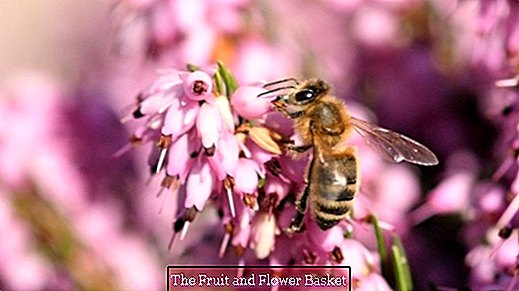Insect killing? Causes, consequences and countermeasures
The drivers among you may already have noticed: For overland or highway driving the windshield remains much longer clean than a few years ago. Where in the past, after a few kilometers, insect corpses were stuck close to each other on the glass, there is now a clear view again. Great, you may think because at first, the critters have only annoyed anyway. But on closer inspection, the reason for this phenomenon turns out to be a serious problem: The population of domestic insects in Germany has reduced by an incredible 75 percent in the last 30 years. In the meantime, the question is no longer whether we have a problem with insect killing, but how we can get it under control before it's too late.
Frightening numbers and facts about insect killing
In the context of a long-term study by the NABU (Nature Conservation Union Germany), bee-friendly hobby entomologists have been collecting data for 27 years. At sixty locations in North Rhine-Westphalia, Brandenburg and Rhineland-Palatinate, various types of insects were caught and counted between 1989 and 2015 using so-called malaise traps. After evaluation of the data, the result of the study was published in October 2017, revealing a bleak picture. Accordingly, there is a proven decline in insect biomass of about 75 percent. It is obvious that such a drastic change will shake the ecological balance in this relatively short period of time. Particularly frightening is the fact that all malaise traps were set up in nature reserves? if the insect population is already endangered in these particularly protected regions, what is the situation in the rest of Germany?
The exact causes of insect killing have not yet been finally clarified. However, pesticides (especially the so-called neonicotinoids from the group of insecticides) are already suspected of having a significant share in the loss of sensitive six-legged animals. Likewise, monoculture, which is steadily increasing in German agricultural areas, is shared among the experts in insect killing.
Surviving bees
With a spectacular campaign, discounter Penny recently introduced his customers to the consequences of bee mortality: in one store near Hanover, all food items that are directly or indirectly dependent on the pollination performance of the bees were removed from the shelves for one day. Of the total of around 2,500 articles in the current product range, 1,600 were affected, which is about 60 percent. This very graphic action makes it clear how much human beings depend on the performance of bees and other insects pollinating bugs.
How each of us can help the bees
Fortunately, every one of us can make a small contribution to saving the bees. Of course, the measures described below are not enough on their own? the problem needs to be addressed as quickly as possible on a large scale. First and foremost, I see it as a duty of the legislator to curb the use of harmful pesticides as much as possible. But as everyone knows, the mills in this area grind very slowly (if at all). Therefore, every little private commitment makes sense, because: Many drops cool even the hottest stone, right? So, now for the tips.
1. Bee hotel set up
A bee hotel in the garden helps wild bees to find a suitable place for nesting. It does not take up much space and is easy to build by yourself with a bit of skill. In this older post at TheFruitAndFlowerBasket the topic is treated very nicely and in detail, a construction manual for a dashing Maja-Adlon is also included: Building nesting aids for wild bees? how are you?
2. Sow wildflowers
A blooming wildflower meadow is the equivalent of an all-you-can-eat-eater buffet for humans in insects: food is enough! So if you sacrifice a few square meters of your English lawn in favor of a wildflower mix, insects (and their eyes) will definitely do something good.
3. Create bee pasture
The small counterpart to the wildflower meadow is the so-called wildflower bee pasture on the balcony or the windowsill. The quick solution for those who do not have a garden: Simply populate a flower box with a wildflower seed mixture and put it outside.
4. Set up bee troughs
Even bees are thirsty. A bees bar is a flat, water-filled bowl. Some stones sticking out of the water serve as bar stools for our furry friends. The beehives are set up right next to the bee pasture or in the middle of the wildflower meadow.
5. Forgo pesticides
This advice to all hobby gardeners actually needs no further explanation.
Become a bee godfather
To take over the sponsorship for a bee colony, neither a private garden nor a balcony are needed. The great side effect: Part of the honey collected by the bees is sent to the sponsor of the bee colony.Information about the topic as well as the possibility to complete a sponsorship can be found here: //www.bienenpatenschaft.info/Bienenpatenschaft.2127.0.html
7. Become a beekeeper yourself
This is probably the most ambitious way, the local bees under the arms, sorry, under the wings to grab. Anyone who thinks he would make bella figura in beekeeping can find out about this topic and the various course offers on the website of the German Beekeeper's Association: //deutscherimkerbund.de/172-DIB_Nachwuchsfoerderung





